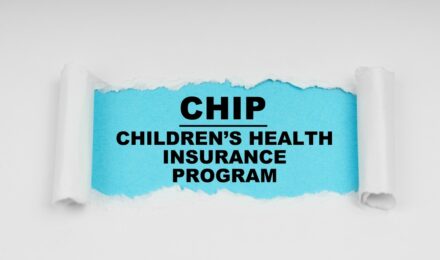Contents
Every June, schools across the country close their doors for summer break. While children welcome the long days of freedom, the transition can be devastating for families who rely on free or reduced-price school meals. During the academic year, nearly 30 million children receive nutritious breakfasts and lunches through the National School Lunch Program and School Breakfast Program. When summer arrives, those meals disappear, leaving millions of households at risk of food insecurity.
The federal government, along with state agencies and nonprofit partners, has developed a patchwork of summer nutrition programs to fill this gap. Yet awareness remains low, and many eligible families never claim the benefits. As summer 2025 begins, now is the time to understand how these programs work, what new options are available, and how parents can ensure children continue to receive the food they need.
Why Summer Poses Unique Food Security Challenges
Food insecurity spikes in the summer for several reasons. Parents may have to cover child care costs while schools are closed, leaving less money for groceries. Kids spend more time at home, increasing household food needs. Many families also lose access to free or reduced-price school meals that previously covered at least two-thirds of their child’s daily nutrition. These pressures converge at the exact moment when household budgets are already strained by higher energy bills, transportation costs, and, in some cases, seasonal employment fluctuations.
USDA has long recognized this challenge, and since the 1960s it has funded summer nutrition programs to keep children fed. Still, participation has historically lagged far behind school-year levels. In 2023, for every 100 children who received free or reduced-price lunches during the academic year, only about 17 accessed summer meals. Closing that gap remains a top priority for advocates and policymakers.
Key Summer Nutrition Programs in 2025
The summer of 2025 is particularly important because of new federal investments and program expansions. Three primary options are available:
- Summer Food Service Program (SFSP): This long-standing program funds free meals for children 18 and under at approved community sites such as schools, libraries, and recreation centers. Meals must meet federal nutrition standards and are typically served in group settings.
- Seamless Summer Option (SSO): School districts that already participate in the National School Lunch Program can extend their meal service through the summer under the same rules. Thus making it easier to use existing kitchens and staff.
- Summer Electronic Benefit Transfer (Summer EBT): A major new development in 2024, this program provides eligible families with $40 per month per child in grocery benefits during the summer months. Benefits are loaded onto EBT cards and can be used at authorized retailers, similar to the Supplemental Nutrition Assistance Program (SNAP). All states are required to implement Summer EBT by 2025, though rollout details vary (U.S. Department of Agriculture, 2024).
Together, these programs create multiple pathways for families to access nutrition support, whether through community meal sites or direct purchasing power at grocery stores.
How Families Can Access Summer Meals
The application process depends on the type of program. For SFSP and SSO, families generally do not need to apply in advance. Instead, they can locate nearby meal sites through the USDA’s Summer Meals Site Finder or by calling 1-866-3-HUNGRY. Meals are provided free of charge to all children, regardless of income, which reduces stigma and simplifies participation.
For Summer EBT, eligibility is tied to a child’s participation in free or reduced-price meal programs during the school year. Families that already qualify should be automatically enrolled. They will receive benefits on their existing EBT cards or through new cards mailed by their state agency. In some states, additional families may qualify through SNAP, TANF, or Medicaid enrollment. Parents should confirm with their state’s Department of Human Services or Department of Education to ensure their information is up to date.
Overcoming Barriers to Participation
Even with robust programs, barriers persist. Transportation is one of the largest obstacles, especially in rural areas where meal sites may be far apart. In some communities, participation is hindered by limited awareness—families may not know that free meals are available or assume that eligibility is restricted to the very lowest incomes. Stigma can also deter older children and teenagers from attending group meal sites.
Innovative strategies are emerging to address these barriers. Mobile meal delivery, sometimes referred to as “Meals on Wheels for kids,” has expanded in several states, using buses or vans to distribute meals directly to neighborhoods. Technology also plays a role: texting services and interactive maps now make it easier for parents to locate the nearest site. The rollout of Summer EBT represents another major step, giving families flexibility to purchase food that fits their dietary needs and cultural preferences.
The Role of Community Partners
Local organizations are critical to making these programs successful. Libraries, YMCAs, Boys & Girls Clubs, and faith-based institutions often serve as distribution hubs. Nonprofits frequently supplement federal funds with private donations to provide snacks, weekend food bags, or enrichment activities alongside meals. For parents, this means that summer meal programs are not just about nutrition—they often create safe, supervised spaces where children can learn, play, and connect with peers. This dual benefit of nutrition and enrichment underscores the importance of strong community partnerships.
Preparing Ahead of Time
Parents who anticipate food insecurity during the summer should act early. Checking state and local websites in May can confirm when and where sites will open. Families should also make sure their school meal applications are up to date to ensure automatic eligibility for Summer EBT. Those with transportation challenges may wish to explore whether their community offers mobile delivery or consider arranging carpooling with other families. Because benefits vary by state, families should monitor local announcements and remain proactive in contacting school districts or human services agencies.
Reliable Resources for Families
Three key resources can help families navigate the system. The USDA Summer Meals Site Finder provides up-to-date information on open meal sites across the country. No Kid Hungry, a national campaign against child hunger, offers a texting service and local program details. Finally, state human services agencies maintain official guidance on Summer EBT distribution, ensuring parents know how to access grocery benefits and what deadlines apply. Together, these tools ensure that no family has to navigate the summer hunger challenge alone.
Conclusion
The summer months should be a time of growth, exploration, and joy for children—not a season of empty plates and anxious parents. With the expansion of summer nutrition programs, families have more opportunities than ever before to access the food their children need. Yet programs only work if families know about them and feel empowered to participate. By spreading awareness, reducing stigma, and building strong community networks, we can ensure that every child is nourished, healthy, and ready to thrive when school resumes in the fall.
References
1. Hunger Doesn’t Take a Vacation: Summer Nutrition Status Report, 2024. (Food Research & Action Center)
2. Summer EBT Program. (U.S. Department of Agriculture)
3. Summer Meals. (No Kid Hungry)
Contents
Every June, schools across the country close their doors for summer break. While children welcome the long days of freedom, the transition can be devastating for families who rely on free or reduced-price school meals. During the academic year, nearly 30 million children receive nutritious breakfasts and lunches through the National School Lunch Program and School Breakfast Program. When summer arrives, those meals disappear, leaving millions of households at risk of food insecurity.
The federal government, along with state agencies and nonprofit partners, has developed a patchwork of summer nutrition programs to fill this gap. Yet awareness remains low, and many eligible families never claim the benefits. As summer 2025 begins, now is the time to understand how these programs work, what new options are available, and how parents can ensure children continue to receive the food they need.
Why Summer Poses Unique Food Security Challenges
Food insecurity spikes in the summer for several reasons. Parents may have to cover child care costs while schools are closed, leaving less money for groceries. Kids spend more time at home, increasing household food needs. Many families also lose access to free or reduced-price school meals that previously covered at least two-thirds of their child’s daily nutrition. These pressures converge at the exact moment when household budgets are already strained by higher energy bills, transportation costs, and, in some cases, seasonal employment fluctuations.
USDA has long recognized this challenge, and since the 1960s it has funded summer nutrition programs to keep children fed. Still, participation has historically lagged far behind school-year levels. In 2023, for every 100 children who received free or reduced-price lunches during the academic year, only about 17 accessed summer meals. Closing that gap remains a top priority for advocates and policymakers.
Key Summer Nutrition Programs in 2025
The summer of 2025 is particularly important because of new federal investments and program expansions. Three primary options are available:
- Summer Food Service Program (SFSP): This long-standing program funds free meals for children 18 and under at approved community sites such as schools, libraries, and recreation centers. Meals must meet federal nutrition standards and are typically served in group settings.
- Seamless Summer Option (SSO): School districts that already participate in the National School Lunch Program can extend their meal service through the summer under the same rules. Thus making it easier to use existing kitchens and staff.
- Summer Electronic Benefit Transfer (Summer EBT): A major new development in 2024, this program provides eligible families with $40 per month per child in grocery benefits during the summer months. Benefits are loaded onto EBT cards and can be used at authorized retailers, similar to the Supplemental Nutrition Assistance Program (SNAP). All states are required to implement Summer EBT by 2025, though rollout details vary (U.S. Department of Agriculture, 2024).
Together, these programs create multiple pathways for families to access nutrition support, whether through community meal sites or direct purchasing power at grocery stores.
How Families Can Access Summer Meals
The application process depends on the type of program. For SFSP and SSO, families generally do not need to apply in advance. Instead, they can locate nearby meal sites through the USDA’s Summer Meals Site Finder or by calling 1-866-3-HUNGRY. Meals are provided free of charge to all children, regardless of income, which reduces stigma and simplifies participation.
For Summer EBT, eligibility is tied to a child’s participation in free or reduced-price meal programs during the school year. Families that already qualify should be automatically enrolled. They will receive benefits on their existing EBT cards or through new cards mailed by their state agency. In some states, additional families may qualify through SNAP, TANF, or Medicaid enrollment. Parents should confirm with their state’s Department of Human Services or Department of Education to ensure their information is up to date.
Overcoming Barriers to Participation
Even with robust programs, barriers persist. Transportation is one of the largest obstacles, especially in rural areas where meal sites may be far apart. In some communities, participation is hindered by limited awareness—families may not know that free meals are available or assume that eligibility is restricted to the very lowest incomes. Stigma can also deter older children and teenagers from attending group meal sites.
Innovative strategies are emerging to address these barriers. Mobile meal delivery, sometimes referred to as “Meals on Wheels for kids,” has expanded in several states, using buses or vans to distribute meals directly to neighborhoods. Technology also plays a role: texting services and interactive maps now make it easier for parents to locate the nearest site. The rollout of Summer EBT represents another major step, giving families flexibility to purchase food that fits their dietary needs and cultural preferences.
The Role of Community Partners
Local organizations are critical to making these programs successful. Libraries, YMCAs, Boys & Girls Clubs, and faith-based institutions often serve as distribution hubs. Nonprofits frequently supplement federal funds with private donations to provide snacks, weekend food bags, or enrichment activities alongside meals. For parents, this means that summer meal programs are not just about nutrition—they often create safe, supervised spaces where children can learn, play, and connect with peers. This dual benefit of nutrition and enrichment underscores the importance of strong community partnerships.
Preparing Ahead of Time
Parents who anticipate food insecurity during the summer should act early. Checking state and local websites in May can confirm when and where sites will open. Families should also make sure their school meal applications are up to date to ensure automatic eligibility for Summer EBT. Those with transportation challenges may wish to explore whether their community offers mobile delivery or consider arranging carpooling with other families. Because benefits vary by state, families should monitor local announcements and remain proactive in contacting school districts or human services agencies.
Reliable Resources for Families
Three key resources can help families navigate the system. The USDA Summer Meals Site Finder provides up-to-date information on open meal sites across the country. No Kid Hungry, a national campaign against child hunger, offers a texting service and local program details. Finally, state human services agencies maintain official guidance on Summer EBT distribution, ensuring parents know how to access grocery benefits and what deadlines apply. Together, these tools ensure that no family has to navigate the summer hunger challenge alone.
Conclusion
The summer months should be a time of growth, exploration, and joy for children—not a season of empty plates and anxious parents. With the expansion of summer nutrition programs, families have more opportunities than ever before to access the food their children need. Yet programs only work if families know about them and feel empowered to participate. By spreading awareness, reducing stigma, and building strong community networks, we can ensure that every child is nourished, healthy, and ready to thrive when school resumes in the fall.
References
1. Hunger Doesn’t Take a Vacation: Summer Nutrition Status Report, 2024. (Food Research & Action Center)
2. Summer EBT Program. (U.S. Department of Agriculture)
3. Summer Meals. (No Kid Hungry)






